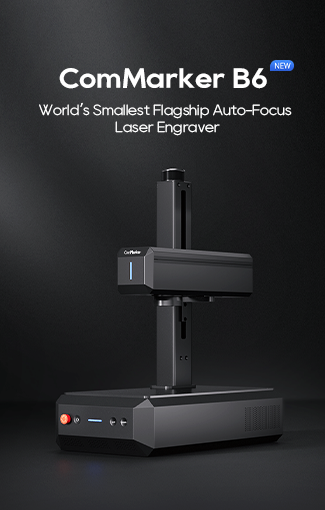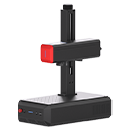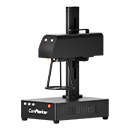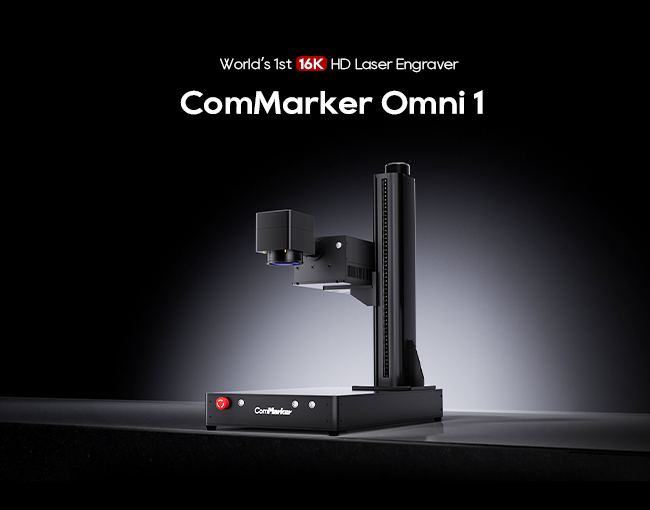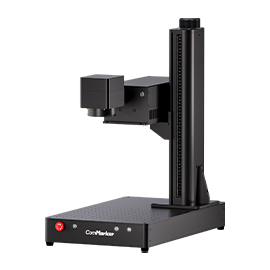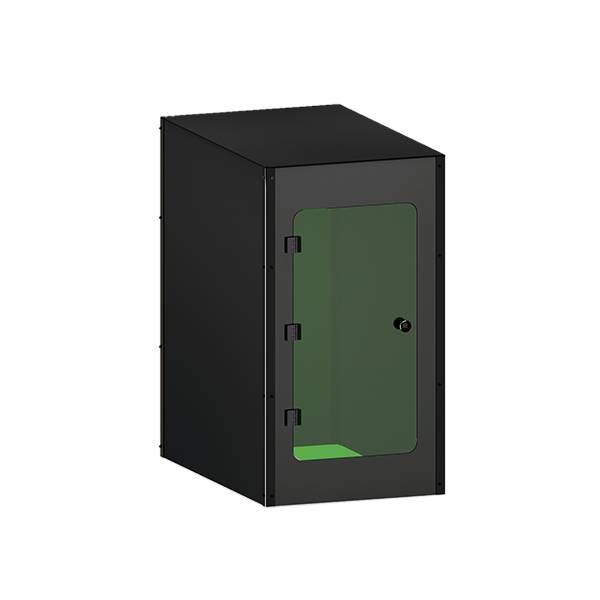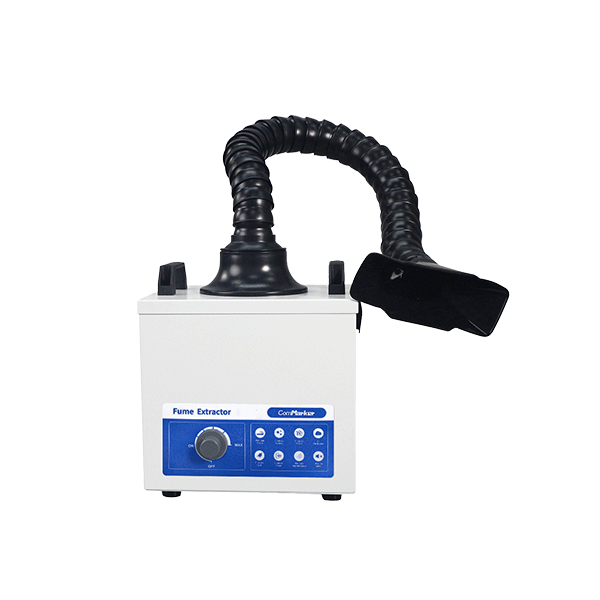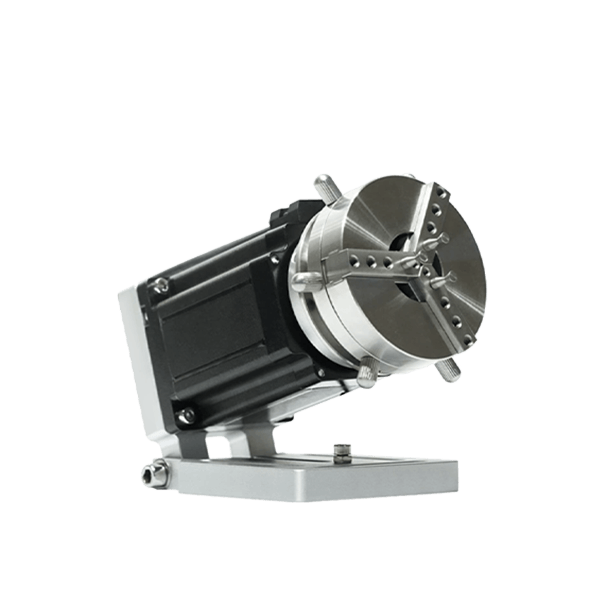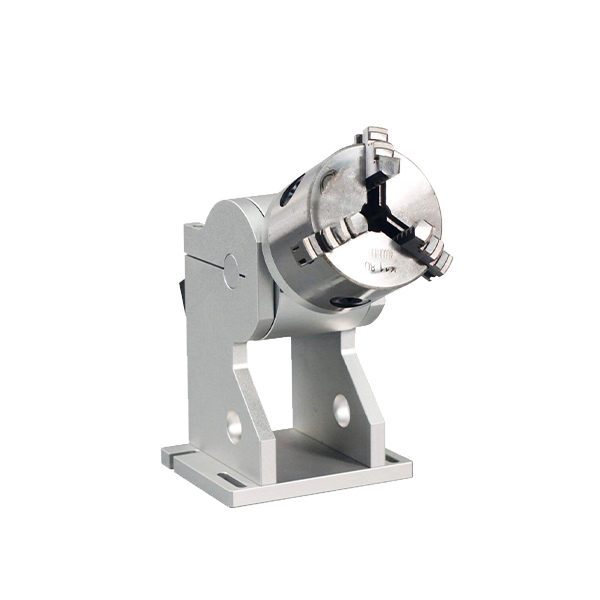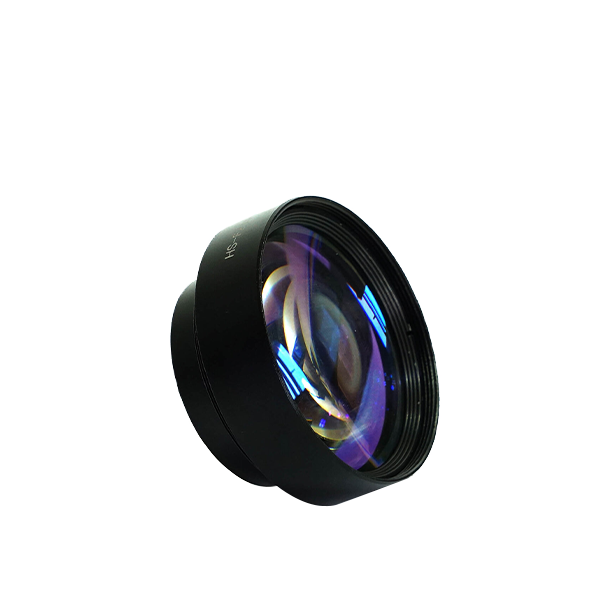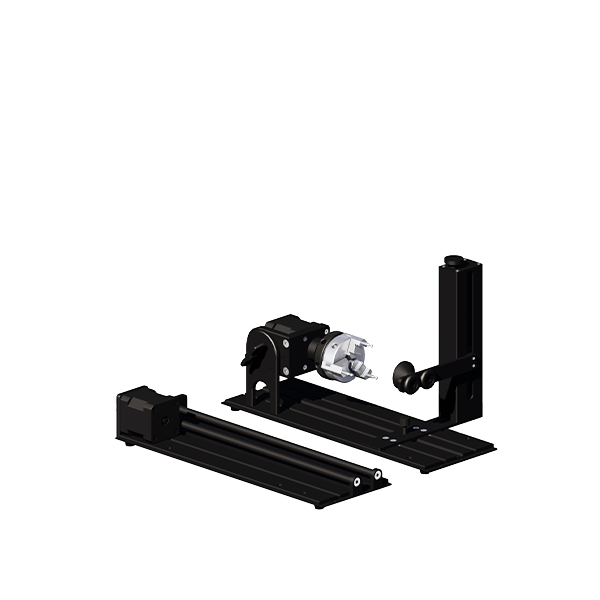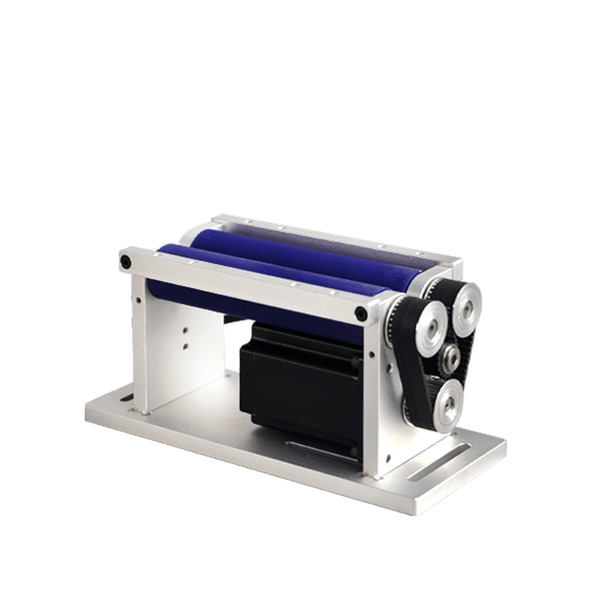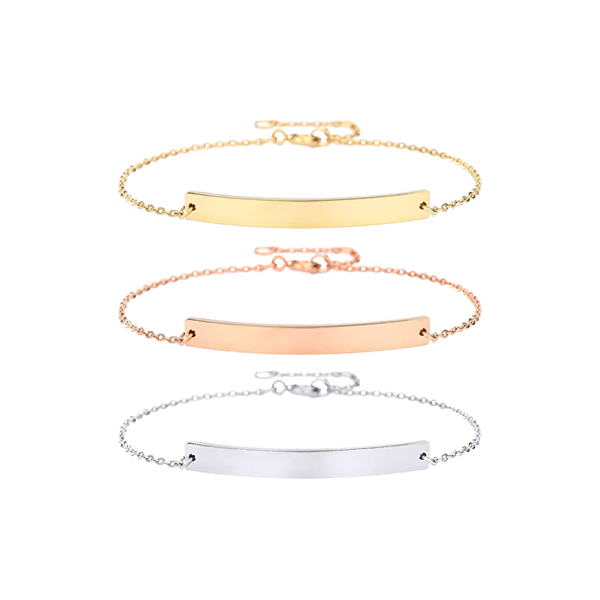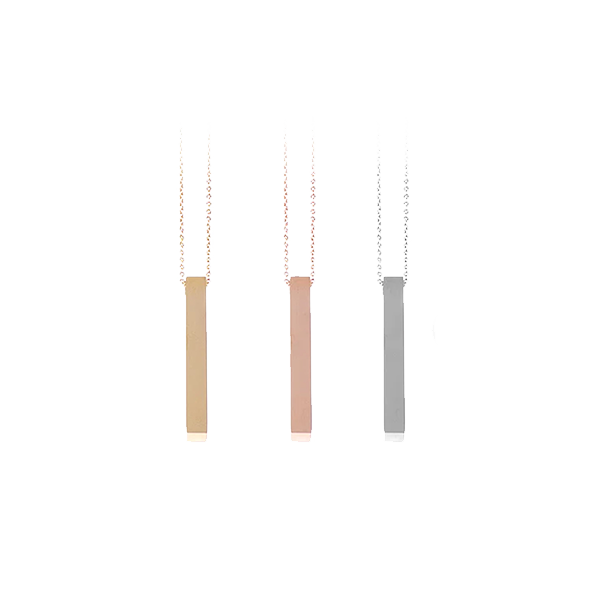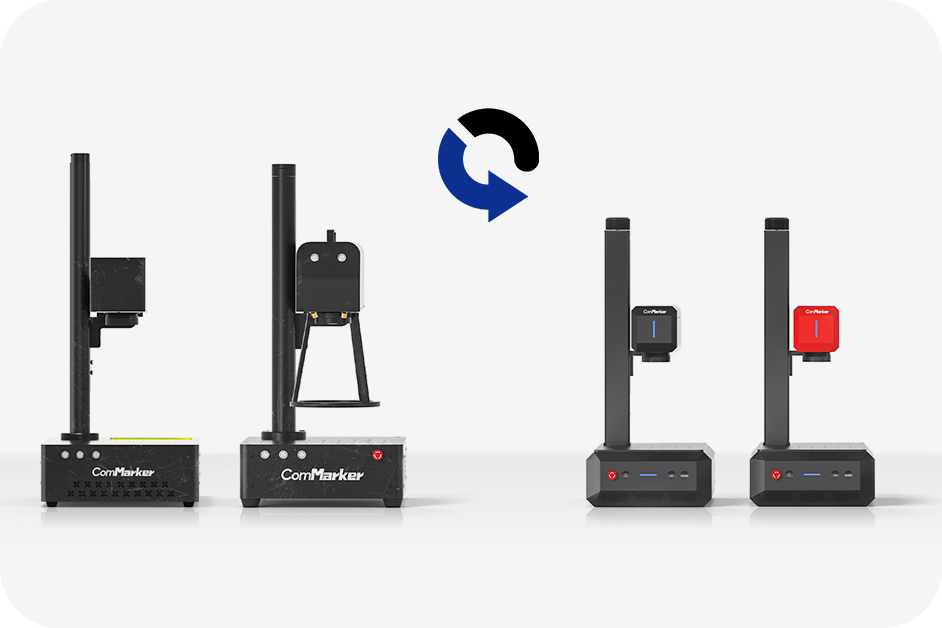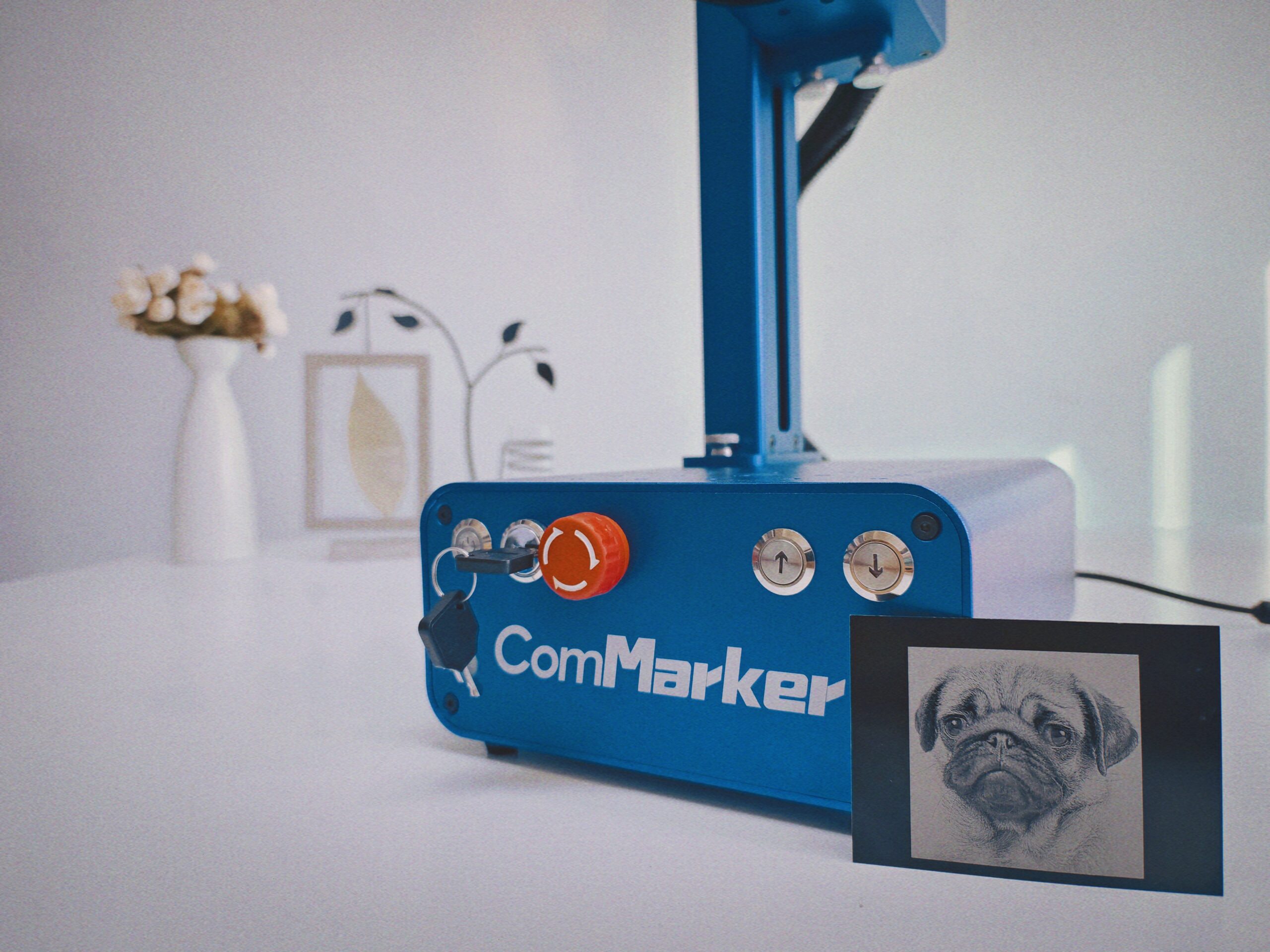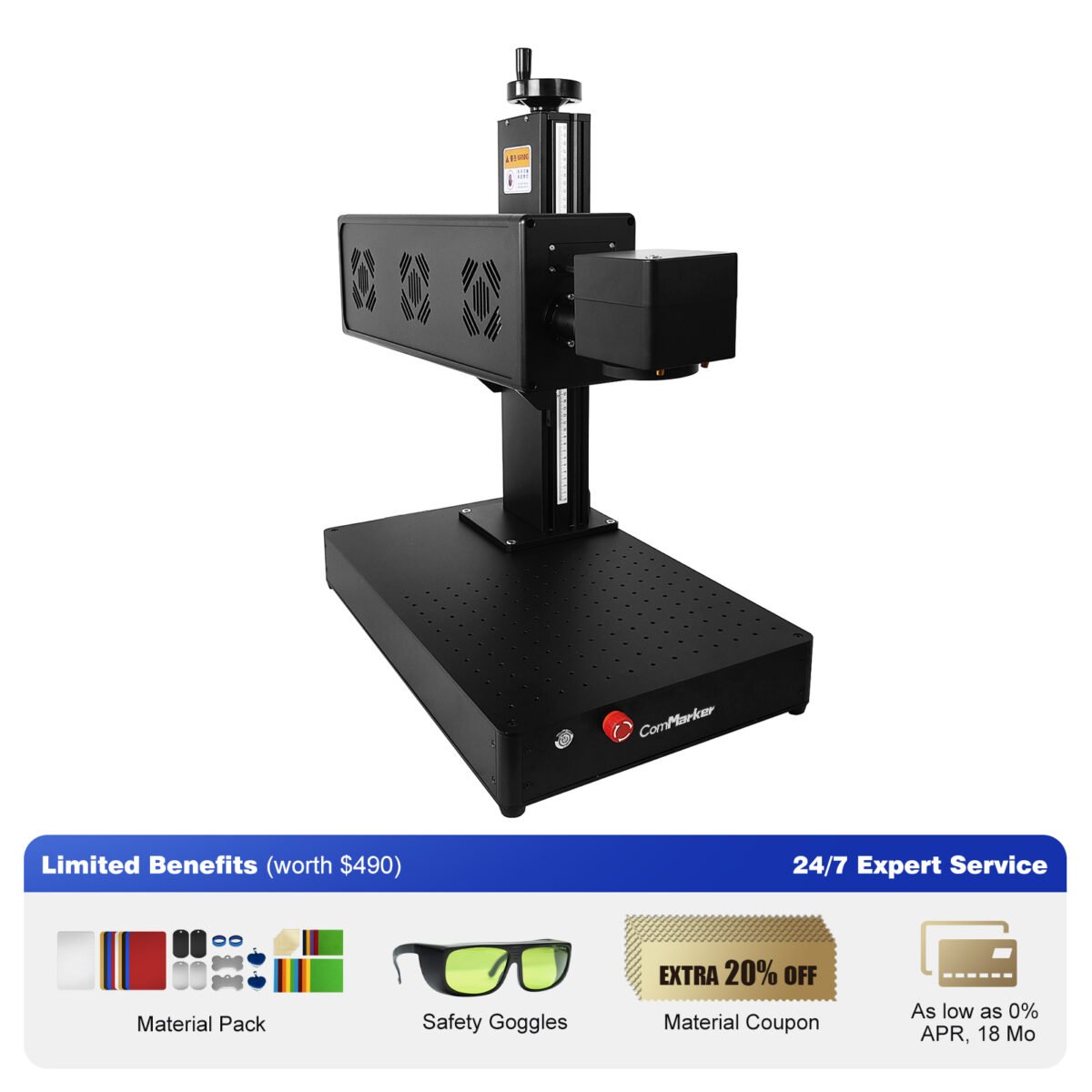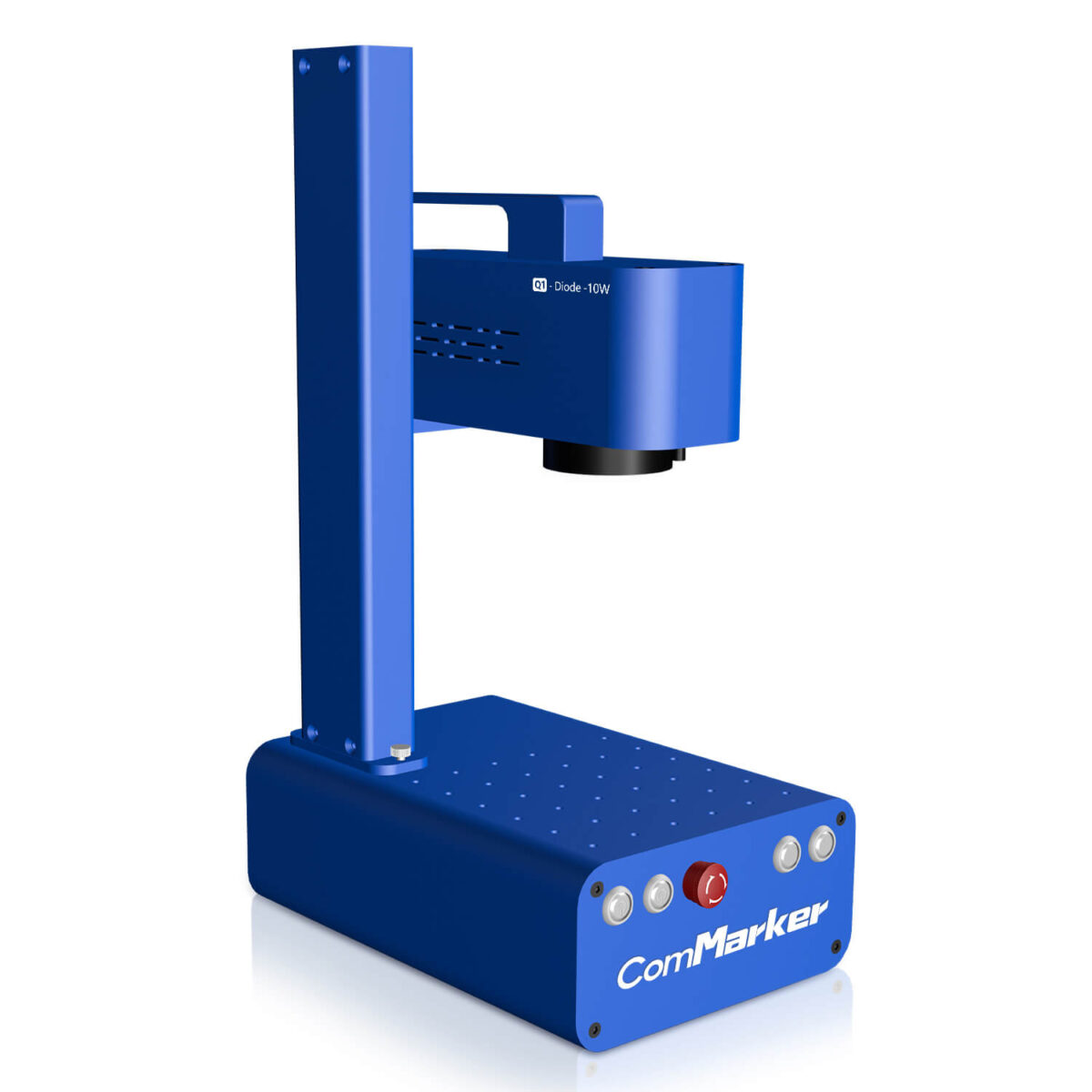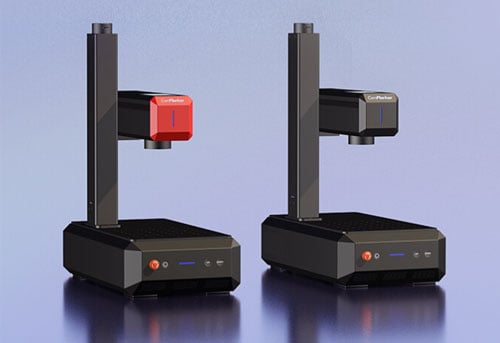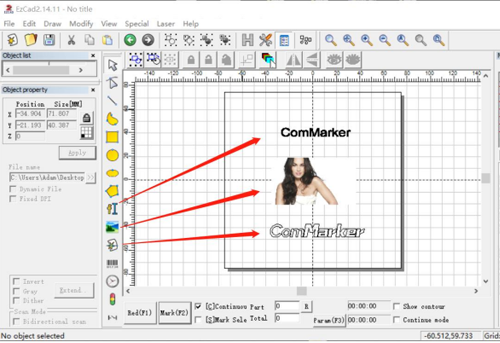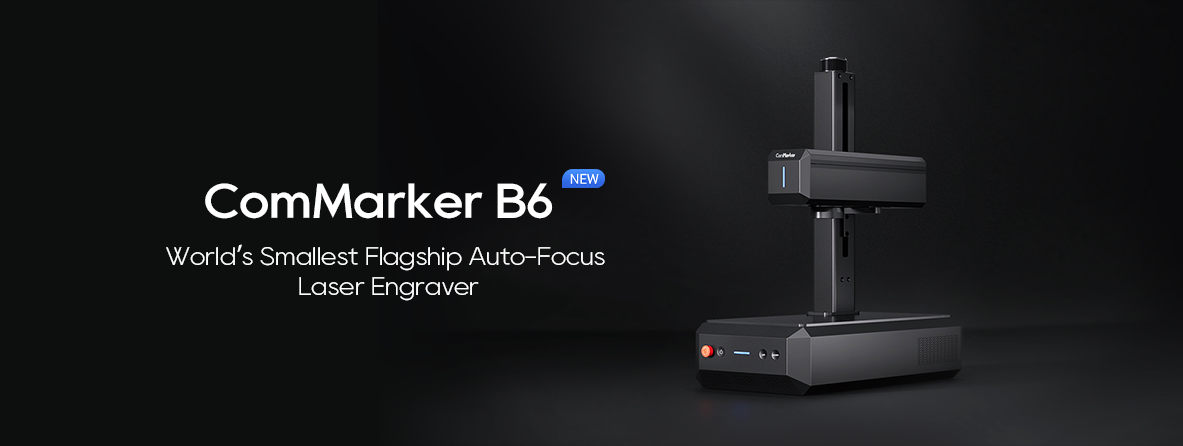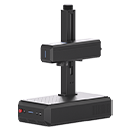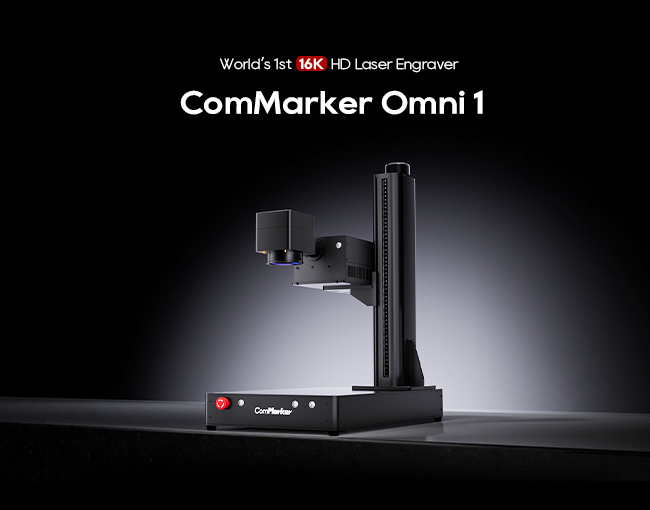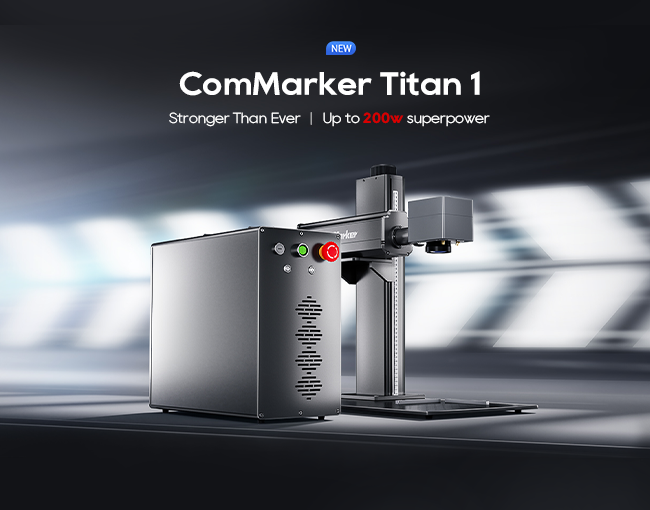Comparado com processos de gravação tradicionais, máquinas de gravação a laser have refashioned the processing speed and efficiency of marking and engraving applications in the industry.
It offers competitive advantages of a fast speed, focused and refined marking, small heat-affected zone, and smooth engraving edge.
Whether you’re a seasoned marking enthusiast, a professional, or just starting out, this comprehensive blog walks you through all the crucial factors that can make or break your laser engraving results.
From laser power, software quality, and characteristics of the material to hardware and external components, we break down the key elements that you’re required to pay attention to in order to achieve optimal results.

1. Laser Power Stability
The output power stability of the laser engraver, which varies with the laser type and architecture, is a vital parameter that determines a machine’s engraving and marking capabilities. Laser power denotes the energy a laser beam delivers within a specific timeframe.
These engraving systems encompass a broad spectrum of power ranges, spanning from a few watts to multiple kilowatts. The power output dictates the intensity of the laser beam, thereby directly affecting the cutting and engraving processes’ velocidade, profundidade, precisão, e versatilidade.
No defined unit or a universal mathematical formula defines the stable laser power. Geralmente, the operator needs to know what laser is sufficiently stable for a specific application.
One dominant factor influencing the engraving output is the type of laser tube installed in a laser cutting and engraving system. Vidro, cerâmica, and metal laser tubes are common options with distinct characteristics. Ceramic laser tubes are widely regarded for their exceptional stability and precise control over power settings.
They enable the operators to make finer adjustments of laser power, providing greater flexibility to optimize cutting and engraving results.
Por outro lado, glass laser tubes, often found in low- to mid-range laser systems, may offer adjustable power settings, but they generally provide less precise control than ceramic tubes.
2. Laser Accuracy and Precision of the Machine
Laser Accuracy is a fundamental variable that refers to how well an engraving machine follows the original design, while precision is the repeatability of the engraving process.
Machines built with high precision and accuracy, como o T1 Max Engraver, ensure that the finished engravings are high quality and meet the required standards.
The stability of the equipment, the aperture of the laser source, and the software used to regulate the engraving process all affect precision and accuracy.
When choosing a gravador a laser de metal, look for a machine with a high-quality laser source, stable mechanical components, and reliable software to ensure precise and accurate results. Gravadores a laser de fibra, such as the ComMarker laser engraver, are known for their high precision and accuracy when engraving metal.
3. Quality of Software
A laser engraving machine needs vector files to start the Laser Engraving process. From the file, the Laser Engraver knows where to point the laser and which image to create.
The laser engraving software is essential as it regulates the laser beam, making it perfect for engraving intricate and small designs. Even the most minor material surfaces can precisely be engraved with detailed graphics thanks to a resolution of up to 1,000 ppi (ou 39 pixels per mm).
4. Mesa de trabalho & Material Fixing
A proper leveling of the gravador a laser on the table and alignment of the laser beam are essential to achieve the optimal engraving result. Before you begin material processing on your laser engraver, leveling the device to the floors or structure it’s located on and the table itself is essential. The critical reason behind this alignment is to get the focal point of the laser beam to be precise.
In case the system is not level and your beam is moving across the X-axis, back and forth, it’ll go out of focus at one point of field or the other, resulting in poor output.
5. Laser Focusing & Optimal Path System
The focal position of the laser engraving machine significantly affects the engraving quality.
The optimal path system in laser engraving technology means a controlled generation of a focused beam of light where light energy heats the point of impact on the material at a specific wavelength.
Considering the beam profile, the base material, the exposure time, and the amount of energy applied, the surface of the material changes with different gradients and intensities.
Adjusting the height of the oscillating lens during laser work enables the laser to reach its strongest state.
Lembrar, the finer the focus, the greater the power on the spot. The material vaporization for permanent marking can be achieved when laser engraving focuses a laser beam on a part from a distance at an appropriate power level. Adjusting the power is pivotal, as too low is ineffective, and too much can burn the material.
6. Environmental Factors
The environment where you process your laser engraver tasks fundamentally influences the machine’s efficiency, produtividade, and long-term working life.
The main by-product of laser engraving machines is the heating element that does all the vaporization and sublimation processes, então, in context to this, room temperature is of significant concern.
Overheating can cause a catastrophic and somewhat expensive failure of the laser. The effective removal and control of this heat is key to prolonged and reliable use. All lasers will have an inbuilt cooling mechanism through fans (air-cooling) or some kind of chiller unit (water-cooling).
Humidity is another primary environmental concern. High humidity, especially when combined with rapid temperature changes, can cause condensation on sensitive electronic components, causing those components to short-circuit.
An ideal ambient temperature for the room should be between 15 e 30 degrees Celsius.
Another important concern that laser owners neglect is the exhaust system. Removing all the dust, destroços, and fumes from the extraction unit (more in case the machine is in heavy use) annually is crucial to its successful performance.
If you don’t maintain the exhaust system and keep it running well if it gets bogged down, it won’t remove debris and fumes and could cause materials to ignite.
7. Qualidade & Characteristics of Material
When you plan to engrave a material, research its properties and ensure its compatibility with the type of laser you’re using. Because when laser light comes in contact with an object, it interacts with it in several ways, depending on the material’s intrinsic characteristics and wavelength. Por exemplo, when engraved, PVC can release toxic fumes, making it unsafe for use.
Material inspection is vital to the point because it dictates the type of laser to be used. Por exemplo, Gravadores a laser de fibra are a good source for metals and heavy-duty usage. No entanto, CO₂ laser engravers work compatibly with various materials, como madeira, acrílico, couro, tecido, vidro, e metais revestidos.
Às vezes, for industrial laser engraving materials, the only factors that should be considered for a given material type are the color, tint, and shade of a given material. This means that, por exemplo, black acrylic can be laser engraved faster than green acrylic.
In order to laser engrave glass with diode or CO2 laser, you need to add a dark layer directly beneath the object and then calibrate the working distance so that the laser beam focuses on its interface, where laser engraving is performed.
8. Operators’ Experience & Skills
Operating a laser engraving machine is not rocket science. Using the product manual, technical proficiency, and mechanical knowledge can make your operating task much more manageable and efficient.
No entanto, the operator should know a few things before using one of these machines.
Primeiro, he should understand the basic concepts of laser engraving. This involves understanding the different types of lasers, the material being engraved and adjusting the machine in terms of laser beam intensity, direction, and speed of movement.
Because the power setting determines the depth of the engraving, the speed affects the time it takes to complete the job, and the resolution, measured in dots per inch (DPI), influences the engraving’s detail and clarity.- All this knowledge is crucial for the operator to own.
Além disso, He must also understand the basics of vector graphics, compatible hardware and software knowledge, and how to create designs that can be engraved using a laser.
To perform all these tasks well, A Laser Operator must have strong mechanical and technical skills and a good eye for detail to accurately operate the machine and achieve the desired results.
9. External Power Supply & Electrical System
Laser machine electrical components are another crucial element for consistent results and good system reliability. It’s absolutely essential to have adequate working components in a laser engraving system to maintain the highest level of quality because users are purchasing a laser device that requires it to be operational all day.
On average, the laser engraving machine uses approximately 500 para 1000 watts if operated for about 4 hours a day.
Carbon dioxide (CO2) and solid-state lasers de fibra require adequate power stability; de outra forma, the laser precision suffers. Lasers inherently generate heat energy, and the chillers inside are absolutely essential to extracting the heat that powers through this electrical mechanism.
Máquina de marcação a laser CO2 ComMarker
Gravador e sistema de marcação a laser CO2 Galvo líder do setor, diferente da máquina gravadora a laser de fibra ,Máquina de marcação a laser CO2 adota CO2 RF
Because every machine configuration is different, electricity consumption varies depending on the model of laser engraver you own, the power used, and the kind of materials being engraved.
The general idea is a 40 Watt CO2 laser engraver with an extraction fan, air pump, and chiller will use around 370 Watts of power, enquanto um 20 Watt gravador a laser de fibra uses around 240 Watts of power, and a 10 Watt Diode laser engraver uses around 60 Watts of power.
Gravador a laser de diodo Q1
Commac Q1 True Industrial Grade 10W Diodo Galvanômetro Máquina de gravação a laser portátil e acessível para aplicações de nível industrial: Máquina de gravação a laser de diodo Q1 VS Máquina a laser CO2 Q1 Galvanômetro Laser de diodo pesa apenas 5.0 quilograma (11besteira),O epítome da portabilidade e conveniência,Facilmente comparado com máquinas a laser CO2,É adequado para muitas aplicações,você pode gravar
10. Maintenance of the Machine
To enjoy long-term laser engraving benefits, one rule is to keep the laser machines in good working condition. Geralmente, Maintenance depends on how heavily the machine is being used and what it is processing.
A laser engraving machine has several key components, incluindo a fonte de laser, galvanômetro, focusing lens, reflective mirrors, and power supply.
All these components work together to produce high-quality engravings.
The high intensity of the laser processes constantly creates fumes, fumaça, and debris, which then build up within your machine and its accessories (chiller, fume filter, etc.) The accumulation can cause system failures and overheating.
You certainly don’t want to postpone business due to a breakdown, particularly one that could easily have been prevented! Então, it’s essential to understand each component and how it functions to maintain the laser engraving machine effectively.
Por exemplo, If the laser machine is engraving on a wood material, it will throw off more dust, fumaça, and debris, so you need a more frequent cleaning cycle on the machine to help maintain it.
On the other side, If a bar code is been engraved on aluminum, you’ll experience minimal burn-off; portanto, there’s no need to clean the optics that often.
If you’re doing something on foam, rubber stamps, ou couro, remember they put off a tremendous amount of smoke and gas that can cloud the optics, so you often want to clean those.
In order for the machine to perform efficiently, get your hands on the laser engraving enclosure and run the machine and the mechanical components through deep cleaning. Any negligence will cause friction, which will wear out the laser head, rolamentos, and belts over time.
Conclusão
When choosing the laser engraving machine for your business, keep in mind that there is no one-size-fits-all solution for everyone; you must consider several factors to select a decent industrial laser engraver for your requirements.
The type of industrial laser engraving machine you choose, the power stability, focus length, precisão, tipo de material, and many other factors significantly impact the performance of your laser machine in the competition.
An intelligent choice is to look for these factors before spending money buying them.




